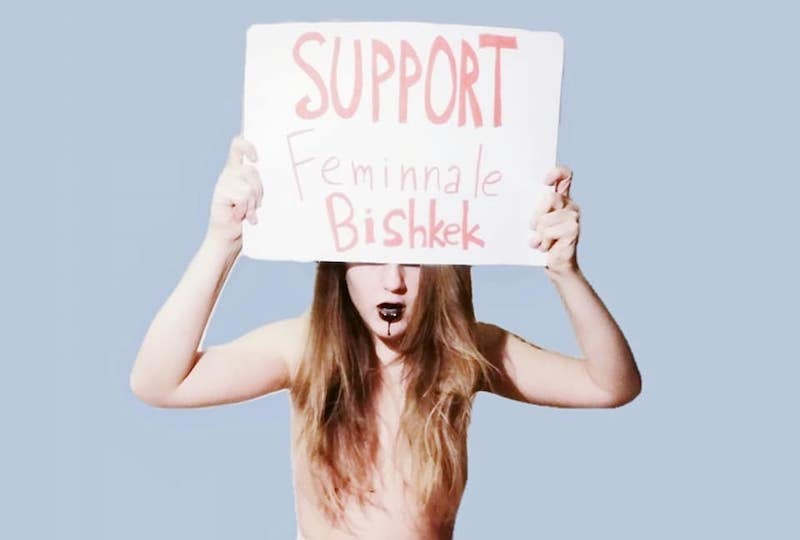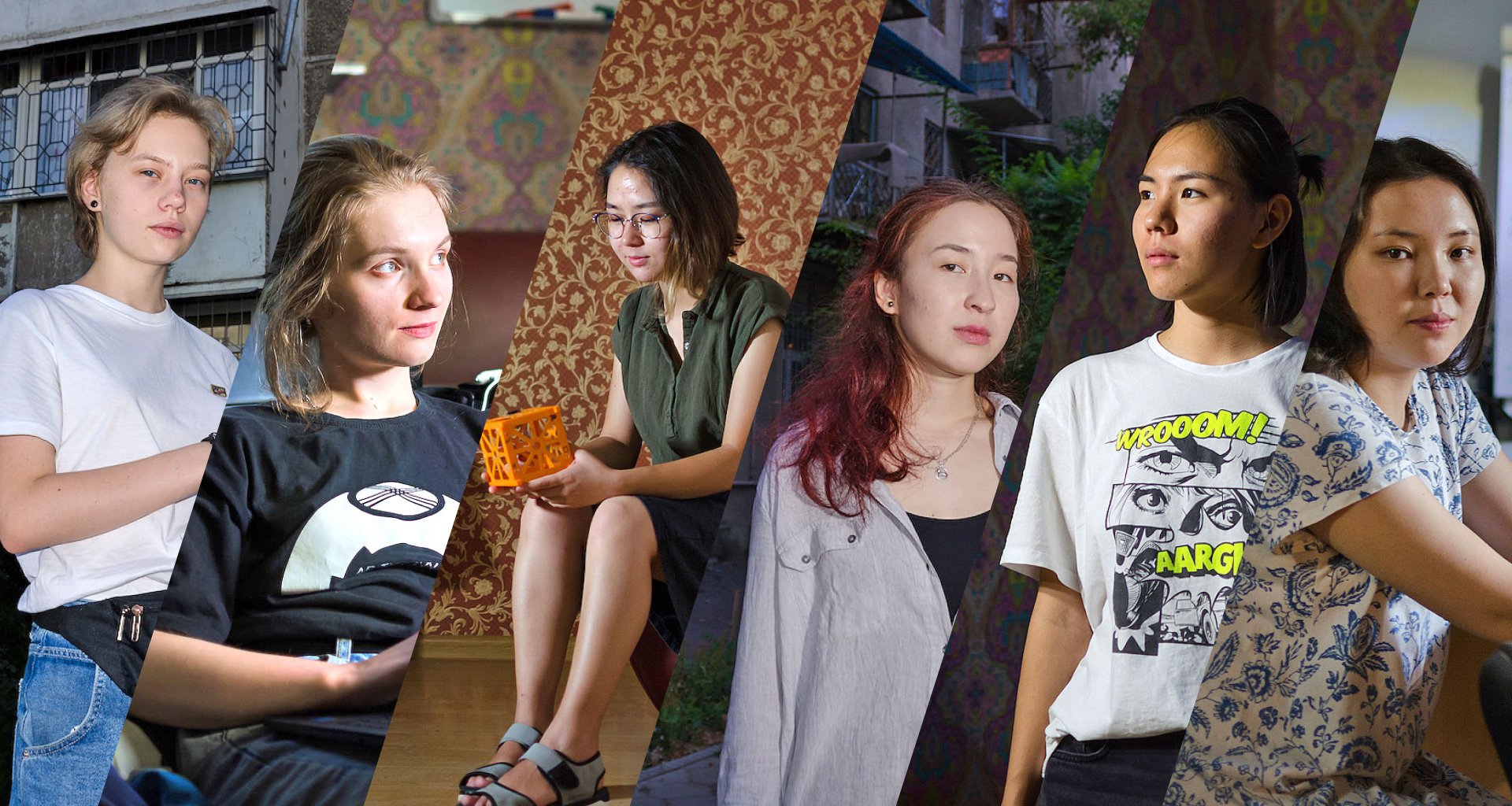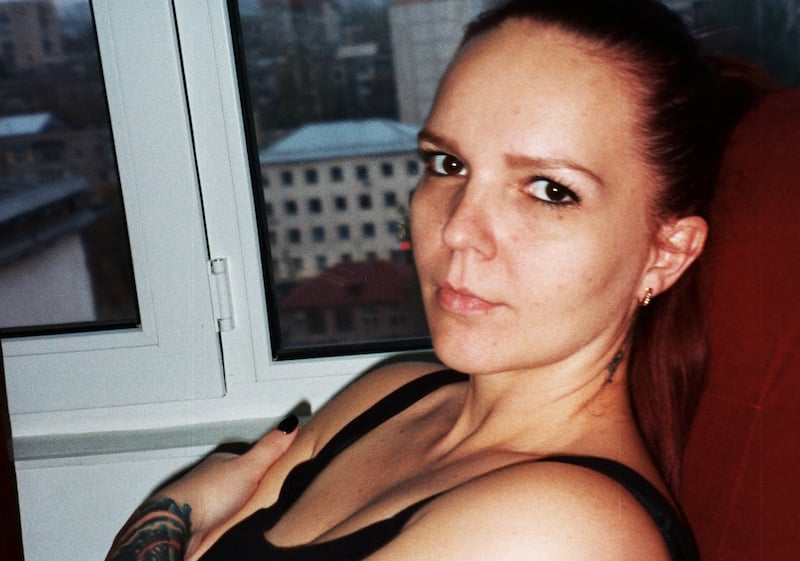Kyrgyzstan launched its first ‘Feminnale’ for feminist art. Then the censors arrived

Bishkek's Feminnale kicked off a fight against the patriarchy. But with government censorship, the struggle is proving even more difficult than artists predicted.
“No one has ever censored her out before,” Kazakh artist Zoya Falkova says. “It’s just never happened.”
The “she” in question is Evermust, a sculpture composed of a black-and-red punching bag shaped like a female body. It’s a statement on gendered violence in a region where such incidents are commonplace; a joint survey by the UN and the World Heath Organisation in Falkova’s native Kazakhstan found that almost 20 per cent of women surveyed had been either physically or sexually abused by a partner. The artwork has been known to produce strong reactions. Men not infrequently fondle or beat it (one such incident in Astana was violent enough to necessitate repairs), women who have experienced domestic violence are sometimes moved to tears, and children hug the piece as though it were an oversized doll. It is perhaps no wonder that Falkova speaks of the sculpture as if it were a living woman.
Evermust has previously drawn official ire. When two diplomats from Uzbekistan and Kazakhstan were photographed next to the punching bag at an exhibition in Germany, government officials from both countries attempted to force Falkova to remove the image from her Facebook page. But it is at the Kyrgyz National Museum of Fine Arts that the work has been formally censored for the first time.
The image of diplomats in Berlin that government officials demanded be removed from Facebook. Image: Zoya Falkova
The sculpture was originally slated to be on display as part of an exhibition of the feminist art entitled Feminnale. The show, which featured 56 artists from 22 countries, was supposed to run for 17 days in honour of 17 women who died in a warehouse fire in Moscow in 2016, most of whom were Kyrgyz labour migrants.
Instead, a flimsy piece of paper has taken its place. The writing on the page declares: “CENSORED.”
Evermust was one of six pieces removed from the museum on the orders of the Minister of Culture after conservative groups expressed outrage over the exhibition’s inclusion of nudity and messages sympathetic to the LGBTQ community. MP Makhabat Ergeshova called such content “incompatible with national traditions,” while one protester from nationalist organization Kyrk Choro dubbed the show “pornographic”. The uproar forced museum director Mira Djangaracheva to resign amid threats of violence.
Image: Focus Kazakhstan/Facebook
“I don’t know if [the minister] has even been upstairs at the museum ... It’s full of nipples!”
The decision has provoked scandal across the country and the region. “[The Kyrgyz Minister of Culture] is violating basic cultural principles,” says Falkova. “He is a parasite on the system of culture. He is stopping cultural development.”
While nudity and moral outrage over the possibility that naked bodies could be glimpsed by a minor acted as primary justification for removing pieces from show, many artists feel that it was challenging conservative gender norms that sealed the artworks’ fate. After all, a short trip to the upper galleries of the Kyrgyz National Museum of Fine Arts would give visitors of any age unfettered views of the museum’s collection of plaster casts, including copies of works such as the Venus de Milo and Michelangelo’s Dying Slave.
“I don’t know if [the minister] has even been upstairs at the museum,” Falkova says scornfully. “He would see nipples! It’s full of nipples — female nipples, male nipples, ancient nipples, Assyrian, Egyptian, all kinds of nipples and genitals!”
Estonian artist Maria Kapajeva’s video piece, Test Shooting, was also removed from the show, despite showing only partially-nude male bodies. To create the piece, the London-based artist filmed an older man stripping down to his underwear and posing mock-coquettishly as she read instructions given by Russian mail-order bride companies to young women on how they should photograph themselves.
“Censorship has no logic: sometimes it’s all about that specific moment, specific emotions, and the anger that comes,” Kapajeva says. “There is a frustration, definitely… Rather than have a discussion with me or with curators, [the authorities] feel they have the power to control it.”
Curators at the museum were ultimately allowed to provide QR codes for visitors who wished to see virtual avatars of the “provocative” works. But the incident — which took place just weeks after a development forum in Bishkek where Kyrgyzstan reiterated its commitment to empowering women — has shaken many. The UN, who organised the forum, has since been moved to condemn the violent threats of anti-Feminnale protesters.
Both Falkova and Kapajeva are keen to stress that negative backlash to their work has not been limited to Kyrgyzstan. Falkova’s refusal to take down the snapshot of the Kazakh consul with her sculpture, Evermust, so angered officials that they tried to exclude her from Kazakhstan’s pavilion at this year’s Venice Biennale.
Rather than trying to silence artists publicly, Kazakh officials instead try to exert pressure out of the public eye by controlling which projects receive government support and the conditions tied to funding, says Falkova. “They know the tricks. They have better PR advisers. They don’t want the Streisand effect, so they don’t do anything about the arts [in the open],” she says.
Kapajeva, meanwhile, had a brush at an exhibition in London, when her work I Am Usual Woman, in which she created quilts out of images of mail-order brides, was excluded at the request of a bank sponsoring the event. “They were really afraid that people would ask questions, political questions,” she says. “They wanted pretty pictures on the wall.”
But unlike the incidents in Kazakhstan and the UK, both women hope that the backlash to the festival in Kyrgyzstan act as a wake-up call.
“I’m hoping that this case is a mirror which will show people what is happening in Kyrgyzstan — or what could happen in a few years,” says Falkova. With conservative elements like Kyrk Choro growing in political clout, she hopes that the outcry in support of the festival will warn officials away from against future attempts to curtail artistic freedom. Continued attention from the media and international bodies is the best way to insure that such incidents do not become the new normal for Kyrgyzstan, she says. “[The Ministry of Culture] didn’t expect that the New York Times and Radio Free Europe would cover [censorship at the exhibition]. I think they will start to use their brain a bit… They followed the advice of these extremists [at Kyrk Choro], and there was a global reaction.”
There’s also hope that discussion of the show will spark a conversation around the topics the artwork covers: domestic violence, rape, and discrimination. “This Feminnale will set an example,” says Kapajeva. [It’ll be] for other regions which have never done something like this before, both in terms of exhibitions as well as conversations.”


